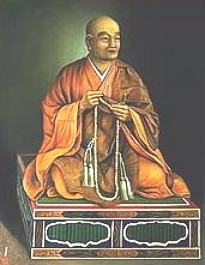Ennin
Ennin, original name Mibu, also called Jikaku Daishi, (born 794, Tsuga District, Shimotsuke Province, Japan—died Feb. 24, 864, Japan), Buddhist priest of the early Heian period, founder of the Sammon branch of the Tendai sect, who brought from China a system of vocal-music notation still used in Japan.
At the age of 8 Ennin began his education at Dai-ji (ji, “temple”), and he entered the Tendai monastery of Enryaku-ji on Mt. Hiei near Kyoto when he was 15. He became a disciple of the priest Saichō, founder of the sect and the temple. Efforts were under way to harmonize Buddhism and Shinto, and the emperor Nimmyō named Ennin to a large study mission to T’ang China, where Saichō’s inspiration for Tendai had originated.
Ennin spent nine years there, observing, studying, reading, and writing, and when he returned home in 847 he brought with him 559 volumes of Chinese Buddhist literature and many religious implements for Buddhist rituals. Tendai Buddhism had a strong tradition of music, and to the temple at Enryaku-ji, Ennin also brought the method of musical notation for chants used in China, a system of curved and shaped lines and figures called neumes, whose use continues in Japan. Among his voluminous writings was a detailed journal of his Chinese travels.
It was also Ennin who introduced to Japanese Buddhism nembutsu, the practice of chanting the name of Amida Buddha, and this contributed to a new piety developing in rural Japan. The Imperial Court recognized Ennin’s contributions by naming him daihosshi (“great priest”) in 848. Ennin’s doctrines and teachings, stressing piety and the possibility of becoming a Buddha in
this life, developed into the Sammon branch of Tendai Buddhism, one of the three branches of the sect that continue to exist, and influenced the course of Japanese Buddhism for centuries to come. He became chief priest of his order in 854. Upon his death in 864 the title hōin daichi (the highest priestly rank, in effect, “high priest of supreme wisdom”) was posthumously conferred on him, and two years later he was given the honorific name Jikaku Daishi.
